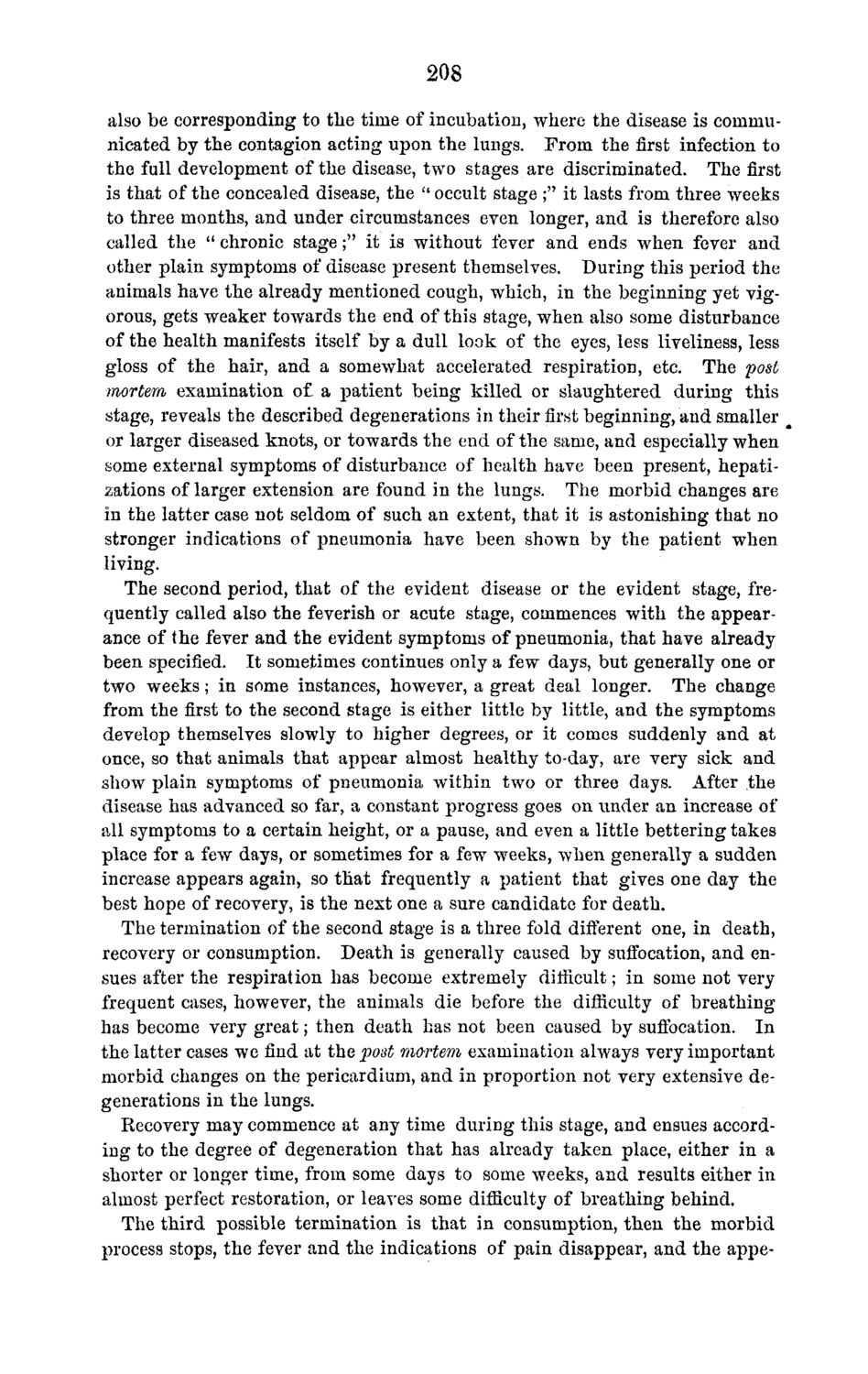| |
| |
Caption: Board of Trustees Minutes - 1870
This is a reduced-resolution page image for fast online browsing.

EXTRACTED TEXT FROM PAGE:
208 also be corresponding to the time of incubation, where the disease is communicated by the contagion acting upon the lungs. From the first infection to the full development of the disease, two stages are discriminated. The first is that of the concealed disease, the " occult stage ;" it lasts from three weeks to three months, and under circumstances even longer, and is therefore also called the " chronic stage;" it is without fever and ends when fever and other plain symptoms of disease present themselves. During this period the animals have the already mentioned cough, which, in the beginning yet vigorous, gets weaker towards the end of this stage, when also some disturbance of the health manifests itself by a dull look of the eyes, less liveliness, less gloss of the hair, and a somewhat accelerated respiration, etc. The post mortem examination of a patient being killed or slaughtered during this stage, reveals the described degenerations in their first beginning, and smaller m or larger diseased knots, or towards the end of the same, and especially when some external symptoms of disturbance of health have been present, hepatizations of larger extension are found in the lungs. The morbid changes are in the latter case not seldom of such an extent, that it is astonishing that no stronger indications of pneumonia have been shown by the patient when living. The second period, that of the evident disease or the evident stage, frequently called also the feverish or acute stage, commences with the appearance of the fever and the evident symptoms of pneumonia, that have already been specified. It sometimes continues only a few days, but generally one or two weeks; in some instances, however, a great deal longer. The change from the first to the second stage is either little by little, and the symptoms develop themselves slowly to higher degrees, or it comes suddenly and at once, so that animals that appear almost healthy to-day, are very sick and show plain symptoms of pneumonia within two or three days. After the disease has advanced so far, a constant progress goes on under an increase of all symptoms to a certain height, or a pause, and even a little bettering takes place for a few days, or sometimes for a few weeks, when generally a sudden increase appears again, so that frequently a patient that gives one day the best hope of recovery, is the next one a sure candidate for death. The termination of the second stage is a three fold different one, in death, recovery or consumption. Death is generally caused by suffocation, and ensues after the respiration has become extremely difficult; in some not very frequent cases, however, the animals die before the difficulty of breathing has become very great; then death has not been caused by suffocation. In the latter cases we find at the post mortem examination always very important morbid changes on the pericardium, and in proportion not very extensive degenerations in the lungs. Recovery may commence at any time during this stage, and ensues according to the degree of degeneration that has already taken place, either in a shorter or longer time, from some days to some weeks, and results either in almost perfect restoration, or leaves some difficulty of breathing behind. The third possible termination is that in consumption, then the morbid process stops, the fever and the indications of pain disappear, and the appe-
| |